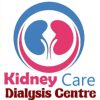Hemodialysis
- Hemodialysis is the most common form of dialysis.
- It involves the use of a dialysis machine to filter the blood outside the body.
- During hemodialysis, blood is pumped out of the body, filtered through a dialyzer (artificial kidney), and then returned to the body.
- Hemodialysis is typically performed at a dialysis center and requires regular sessions, often several times a week.
Peritoneal Dialysis
- Peritoneal dialysis uses the lining of the abdominal cavity (peritoneum) as a natural filter.
- A dialysis solution is introduced into the abdomen through a catheter, and waste products and excess fluids pass into the solution.
- After a prescribed dwell time, the solution is drained, carrying waste products with it.
- Peritoneal dialysis can be done at home, offering greater flexibility for some patients.
Continuous Ambulatory Peritoneal Dialysis (CAPD)
- CAPD is a form of peritoneal dialysis.
- Patients perform manual exchanges of dialysis solution multiple times a day.
- It allows for flexibility in managing treatment and can be done at home or in various settings.
Continuous Cycling Peritoneal Dialysis (CCPD)
- CCPD is another peritoneal dialysis method.
- It uses a machine to perform overnight exchanges, providing daytime freedom.
- Patients typically perform CCPD while sleeping.
Home Hemodialysis
- Home hemodialysis offers patients the option to perform dialysis at home.
- It provides increased flexibility in scheduling and can be tailored to individual needs.
- Training and ongoing support are provided for patients who choose this option.
Vascular Access Management
- This service focuses on maintaining the functionality of vascular access points, such as AV fistulas and grafts.
- Regular monitoring and care are essential to prevent complications.
- Ensuring proper access is critical for effective dialysis treatment.
Dietary and Fluid Management
- Dialysis centers offer dietary counseling to help patients manage their intake of nutrients and fluids.
- Proper dietary choices can help reduce the burden on the kidneys and improve overall health.
- Individualized dietary plans are created to meet each patient’s specific needs.
Medication Management
- Nephrologists and healthcare providers manage medications to control conditions related to kidney disease.
- Medications may include those for blood pressure control, anemia management, and calcium regulation.
- Medication regimens are tailored to each patient’s unique health profile.
Education and Support
- Dialysis centers provide patient education and support services.
- Patients receive guidance on managing their condition, understanding treatment options, and making informed decisions.
- Support groups and resources are available to address the physical and emotional aspects of kidney disease.

